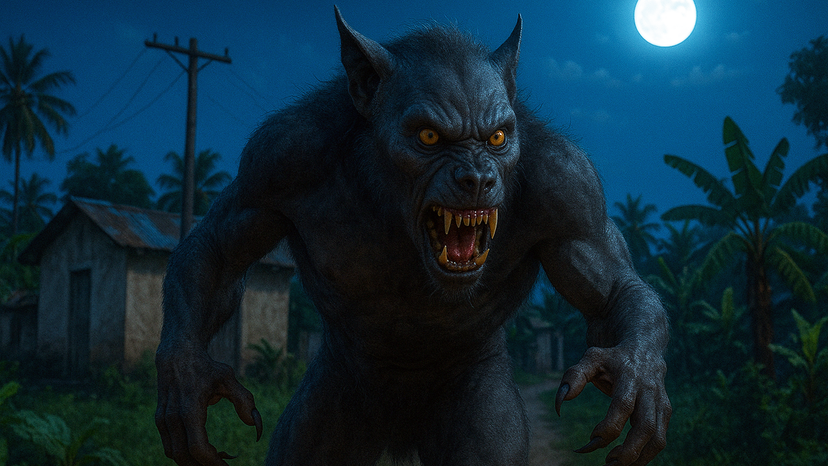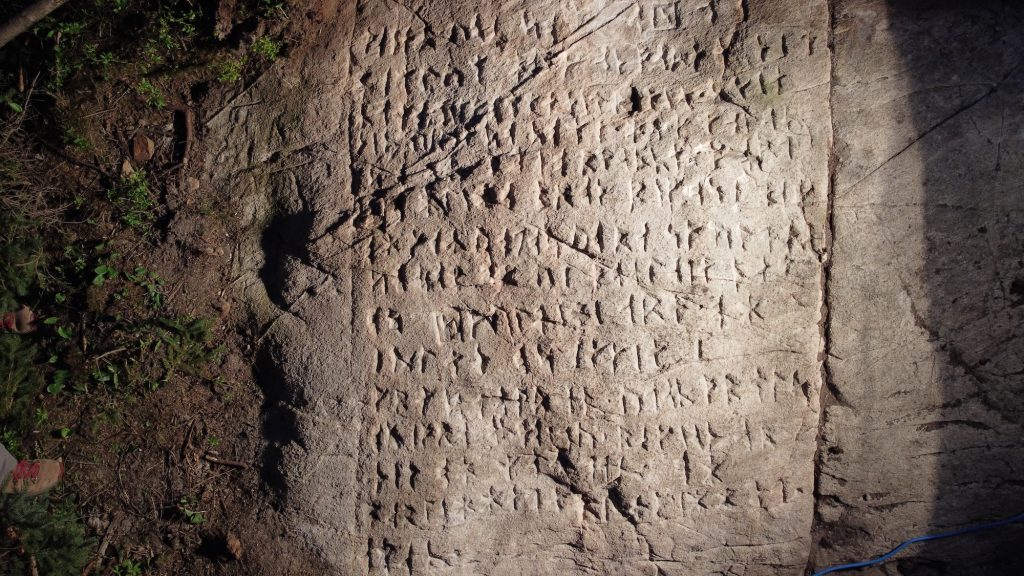
In Haitian folklore, few figures spark more curiosity than the lougawou. Often described as a werewolf-like creature, the lougawou comes from a mix of African mythology, colonial history and Haitian Vodou.
It symbolizes both fear and mystery in Haitian culture, especially in rural communities.
What Is a Lougawou?
The term “lougawou” is derived from the French term “loup-garou,” meaning werewolf. But in Haiti, this creature isn’t just a man turning into a wolf under the full moon.
A lougawou is believed to be a person — often a woman — who can transform into animals like cats, snakes or birds at night. This transformation is typically linked to magical rites or Vodou rituals.
According to legend, lougawou roam the land with glowing red eyes, often hoping to find children or vulnerable people from whom to draw blood. The creature removes her human skin, hides it in the house and takes animal form.
Some say lougawou are possessed by spirits or have made a deal with a deity at the crossroads, whereas other Haitian lore holds that lougawou are created through dark sorcery or curses by people, not through literal possession.
The Role of Lougawou in Haitian Society
In Haitian culture, the lougawou functions as both a myth and a social control mechanism. Haitians use these stories to explain strange events and protect their communities.
It’s not uncommon for people to post warnings or share videos of suspected lougawou sightings. The fear of being labeled a lougawou can lead to social isolation.
Families, especially mothers, tell children stories about lougawou to keep them safe at night. The creature is often linked to danger, transformation and power.
People refer to the lougawou when discussing curses, possession or mysterious deaths. It serves as a cautionary tale about balance and respect within the community.
Spiritual and Mythological Roots
The concept of the lougawou likely originated from African spiritual traditions brought to Haiti during the age of slavery. Over time, these beliefs blended with elements of Catholicism and Indigenous practices to form Haitian Vodou.
Depending on the blend of beliefs you encounter, the lougawou may act as a spirit, serve as a warning of imbalance in the land or embody a sign of malevolent sorcery in the environment.
In Vodou, spirits or lwa are often associated with specific aspects of life. A lougawou may serve as a manifestation of a spirit’s displeasure or a human’s misuse of magical power.
Haitian folklore describes lougawou lurking around houses at night in search of victims — often children or livestock — to kill and consume for their blood.
Common Characteristics and Beliefs
- Animal forms: Lougawou transform into cats, snakes or birds.
- Red eyes: They’re often seen glowing at night.
- Power through rites: Magical or spiritual rites apparently grant them their abilities.
- Possession: They may be possessed by a spirit or curse.
- Dangerous to children: They’re said to prey on the young and weak.
- Slippery reality: Many believe they exist but proof is elusive.
Some believe lougawou can be repelled with special prayers or herbs, while others rely on community watchfulness.
Lougawou in Haitian Media and Everyday Life
Modern Haitians continue to talk about lougawou through music, art and digital platforms. Songs describe encounters with the creature, and social media posts offer supposed sightings or advice on how to deal with them.
Videos sometimes show animals acting oddly, prompting comments about potential lougawou activity.
In urban and rural areas alike, Haitians may include the lougawou in conversations about crime, illness or misfortune. It’s more than just a story; it’s a part of how some people make sense of the world.
Outsiders might see it as a myth, but within Haiti, it’s woven into the fabric of life.
Cultural Symbolism and Broader Impact
The lougawou stands alongside other folkloric figures like zombies and spirits as a key part of Haitian identity. It reflects the power of belief, the legacy of slavery and the resilience of Haitian communities. These myths help people navigate hardship and maintain connections across generations.
In the Americas and beyond, the lougawou has become a cultural touchstone. Scholars explore its meaning in academic articles, while artists adopt its image in works that critique or celebrate Haitian life. The myth’s endurance shows how folklore adapts to reflect new realities.
We created this article in conjunction with AI technology, then made sure it was fact-checked and edited by a HowStuffWorks editor.























